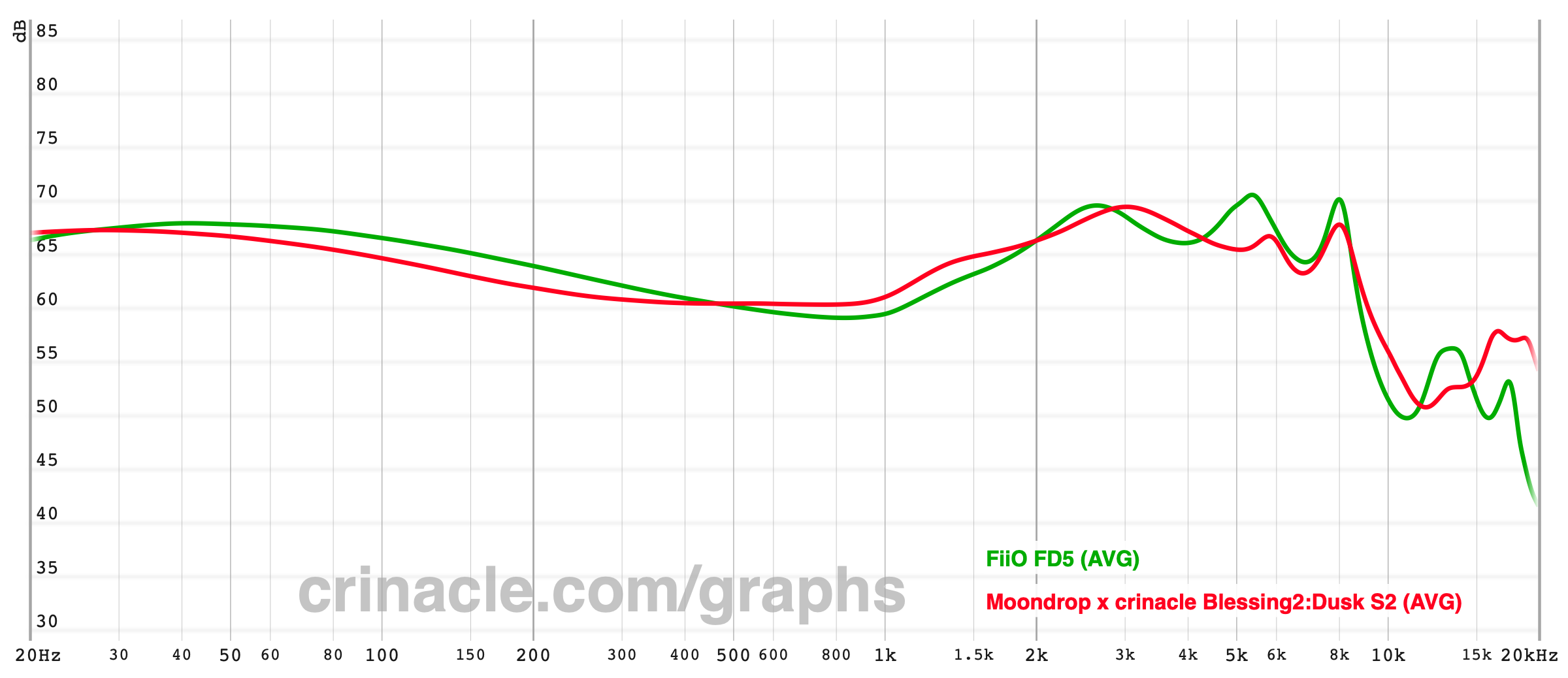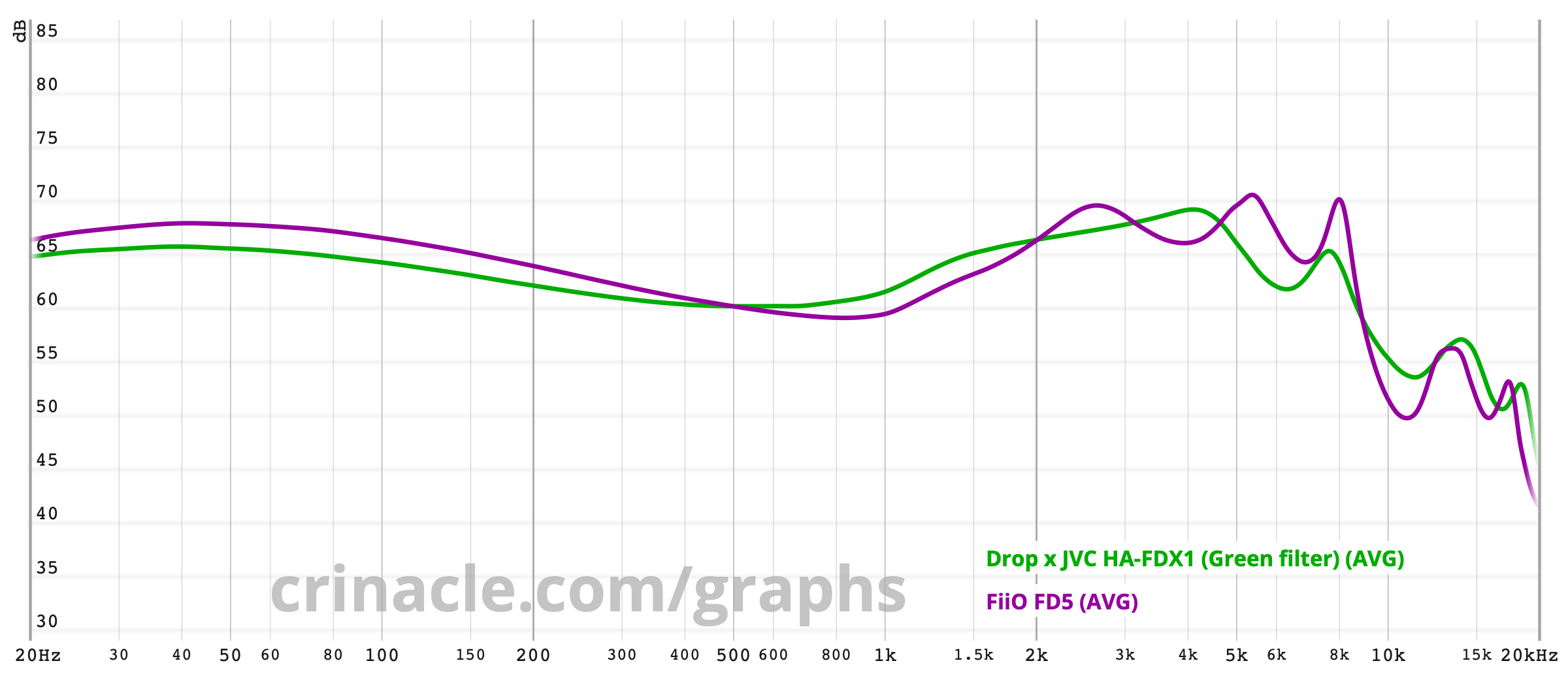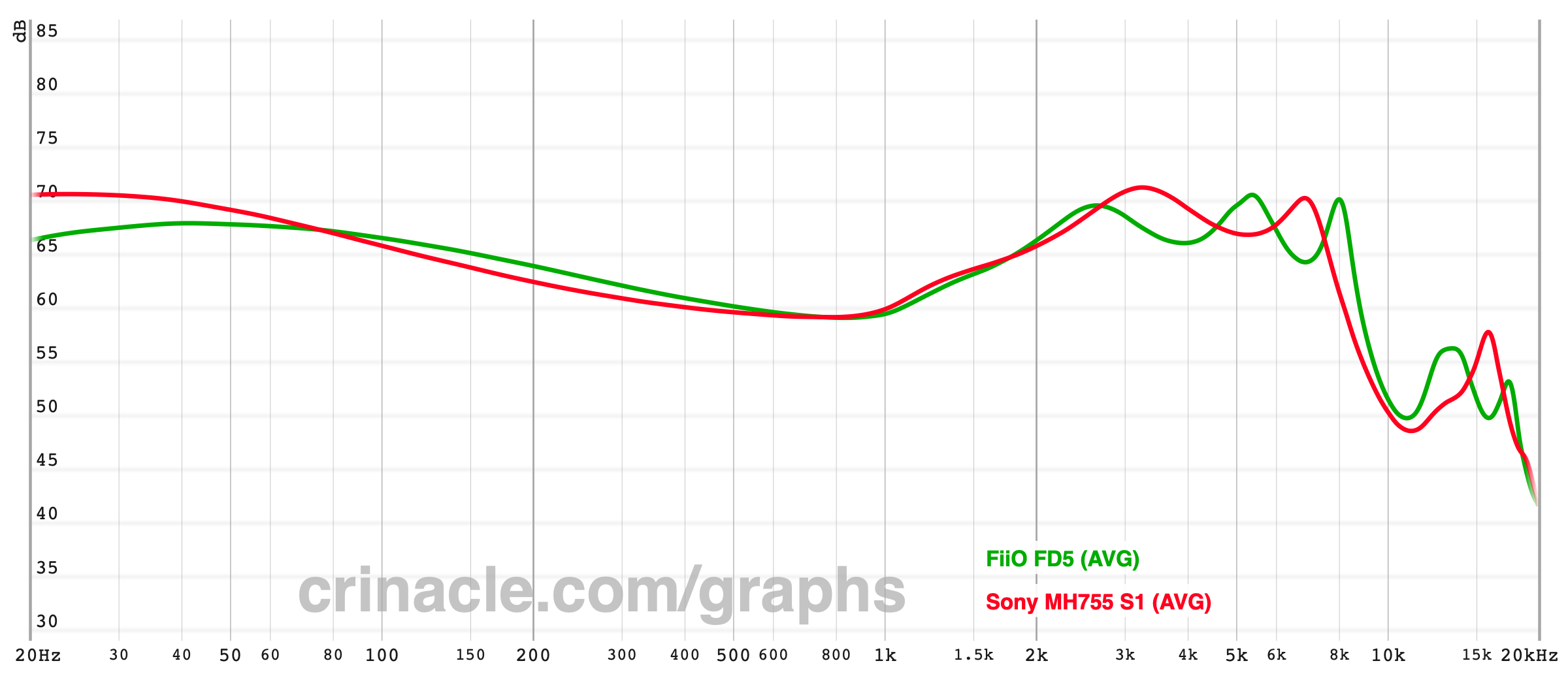A 1.5 Year Revisit: Perhaps the best sub-$400 dynamic driver / hybrid IEM
I remember the first time I picked up the FD5 (I would go on to own them three more times) in January of 2021 after reading the glowing early impressions of them. I was sorely overwhelmed on my first listen, until I discovered how tip-dependent they were, and after shuffling through an assortment of tips, finally discovering their sheer wonder with the SpinFit CP145.
At the time, I wrote a brief initial review of the FD5, mostly expressing my revelry, as one does in the early honeymoon stages. Fast forward to the third-quarter of 2022, and over a dozen IEMs later, including more expensive units as the Moondrop Variations, UM MEST, Sony IER-M9, and ThieAudio Clairvoyance, I thought I would do a proper revisit and head-to-head comparison with other popular competitors to the FD5 I’ve owned in the intervening time.
This review will cover comparisons with the following:
- Moondrop Blessing 2: Dusk [ 1DD 4BA ] — $329
- Unique Melody 3DT — [ 3DD ] — $319
- Sony XBA-N3AP — [ 1DD 1BA ] — $300
- JVC HA-FDX1 — [ 1DD ] — $280
The comparisons with the Dusk and 3DT were done directly, whereas my notes for the XBA-N3 are largely from memory (I’ve owned the N3 thrice now). Finally, the notes on the FDX1 were made in direct comparison with the UM 3DT, so make the appropriate extrapolations as you will.
Unique Melody 3DT

- The FD5 is distinctly more spacious and expansive staging-wise, with a far more open and airy presentation, and a greater sense of scale. By comparison, the 3DT’s staging dimensions are just about average, with a more conventionally intimate, closed-in IEM presentation
- Tonally, the FD5 is relatively more linear, with a mild U-shaped tuning, and a more polite, mid-centric presentation. The 3DT, on the other hand, is unapologetically lively, bold, energetic, vivid, with a slightly aggressive L-shaped tuning.
- Timbral accuracy and dynamism are quite simply superb on the 3DT. This is one of their defining qualities for me, and they easily surpass the FD5 in this regard, with the FD5 sounding relatively soft and smoothed-over. When it comes to the depiction of acoustic instruments, the 3DT stands out with a remarkable realism, vividness, and textural nuance.
- Tonal density is also appreciably greater on the 3DT, lending it a greater sense of realism with acoustic music.
- Clarity and detail retrieval are relatively similar between the FD5 and 3DT, with an edge to the FD5.
- Transparency and separation, however, are distinctly superior on the FD5, due perhaps in part to its semi-vented design.
- Bass displays distinctly greater density, vigour, and slam on the 3DT, whereas the FD5’s bass has a relatively more polite, softer, and more rounded quality
- Treble on the FD5 is smoother, more even, with a more delicate quality, and displays distinctly greater air and extension. The 3DT has a noticeable lower-treble peak that lends it the appearance of greater clarity, but it doesn’t quite extend as high as the FD5, and has a harder, edgier quality.
- Mids are appreciably fuller, more linear, and more open sounding on the FD5, whereas the 3DT’s mids are noticeably leaner, with a slightly recessed lower-midrange, and a greater upper-midrange emphasis
Moondrop Blessing 2: Dusk

- As with the 3DT comparison, staging is distinctly more spacious and expansive on the FD5, with a much more airy and open presentation. By comparison, staging on the Dusk is more forward and more involving, with a more conventionally closed-in IEM presentation.
- Tuning-wise, the Dusk might be described as slightly thick bass-boosted neutral, whereas the FD5 presents a crisper, lighter, mildly U-shaped tuning
- Note weight is noticeably shallower on the FD5 (although this is tip-dependent), with a relatively leaner and drier quality, whereas the Dusk displays appreciably greater tonal density.
- Bass on the FD5 is distinctly tauter, more textured, more agile, with a greater sense of tactility. As has been well-documented, the bass on the Dusk lacks a certain dynamism, elasticity, and tactility, with a relatively dry quality.
- Transient response and speed are distinctly quicker on the FD5, sounding a tad muted or lopped-off on the Dusk, relatively speaking
- There’s distinctly greater snap, bite, and attack on the FD5
- Treble extension is noticeably superior on the FD5, with a pleasingly delicate, airy quality
- Macro- and micro-dynamics are appreciably, if not distinctly, superior n the FD5. Again, as has been documented elsewhere, the Dusk still sounds relatively downwards-compressed. The FD5 simply comes across as being far more effortless and expressive.
- In terms of technicalities, I would say say that the FD5 are noticeably more resolving
Sony XBA-N3AP

- Soundstage is distinctly wider, more spacious, and expansive on the FD5
- Presentation is distinctly airier and more open on the FD5
- Tonally, the N3 is smooth, warm, and bassy, whereas the FD5 showcases a mildly U-shaped profile
- Note weight is appreciably thicker and denser on the N3
- Bass is distinctly weightier, more vigorous, more robust, and more impactful on the N3. However, the FD5’s bass is more agile, textured, defined, and less prominent
- Mids are thicker and fuller-bodied on the N3, being more linear, open, and expressive sounding on the FD5
- Mid- and upper-treble have noticeably greater presence on the FD5, with greater air and extension, whereas the N3 sounds relatively darker and smoothed-off up top
- The FD5 displays distinctly superior micro-dynamics, contrast, and textural nuance, whereas the N3 sounds relatively smoothed-over, as noted by @crinacle in his ranking list
- Technicalities, in terms of clarity, detail retrieval, and separation, are distinctly superior on the FD5.
JVC HA-FDX1 ( compared to Unique Melody 3DT)

- The 3DT is leaner, cleaner, and more precise sounding
- The 3DT displays greater treble extension and articulacy
- The 3DT displays greater bass presence, impact, and definition
- The 3DT displays greater clarity, resolution, and transparency
- The 3DT sounds relatively V-shaped in comparison to the FDX1
- The 3DT displays greater macro- and micro-dynamics
- The 3DT offers distinctly superior isolation
- The 3DT is undoubtedly the superior technical performer, and easily at least a tier above the FDX1
- The FDX1 still suffers from somewhat shouty upper-mids
- The FDX1 is warmer, smoother, and fuller-bodied
- The FDX1 displays a more a more organic, atmospheric presentation
Comment on the Sony MH755

Curiously, of the IEMs I currently own, the FD5 is most reminiscent to my ears of the cult dollar-bin classic, the Sony MH755, but with a more masterful tuning and technical performance that far surpasses the latter. For those looking for
the upgrade to the MH755 with a more mature tuning, the FD5, at least for me, fits the bill.
Conclusion
Suffice to say, the FD5 is my favourite IEM of the Dusk, 3DT, XBA-N3, and FDX1. They are easily the most technically competent performers of the lot
as a whole, with a tuning that deftly toes the line between palatability, engagement, and fun. The N3 is a close contender for subjective fun and engagement factor and close too to my ideal tuning, but they lack that bit of lower- to mid-treble energy, and their technicalities have begun to show their age. The 3DT remains a compelling option for its unique timbre, vivid presentation, and visceral energy.































